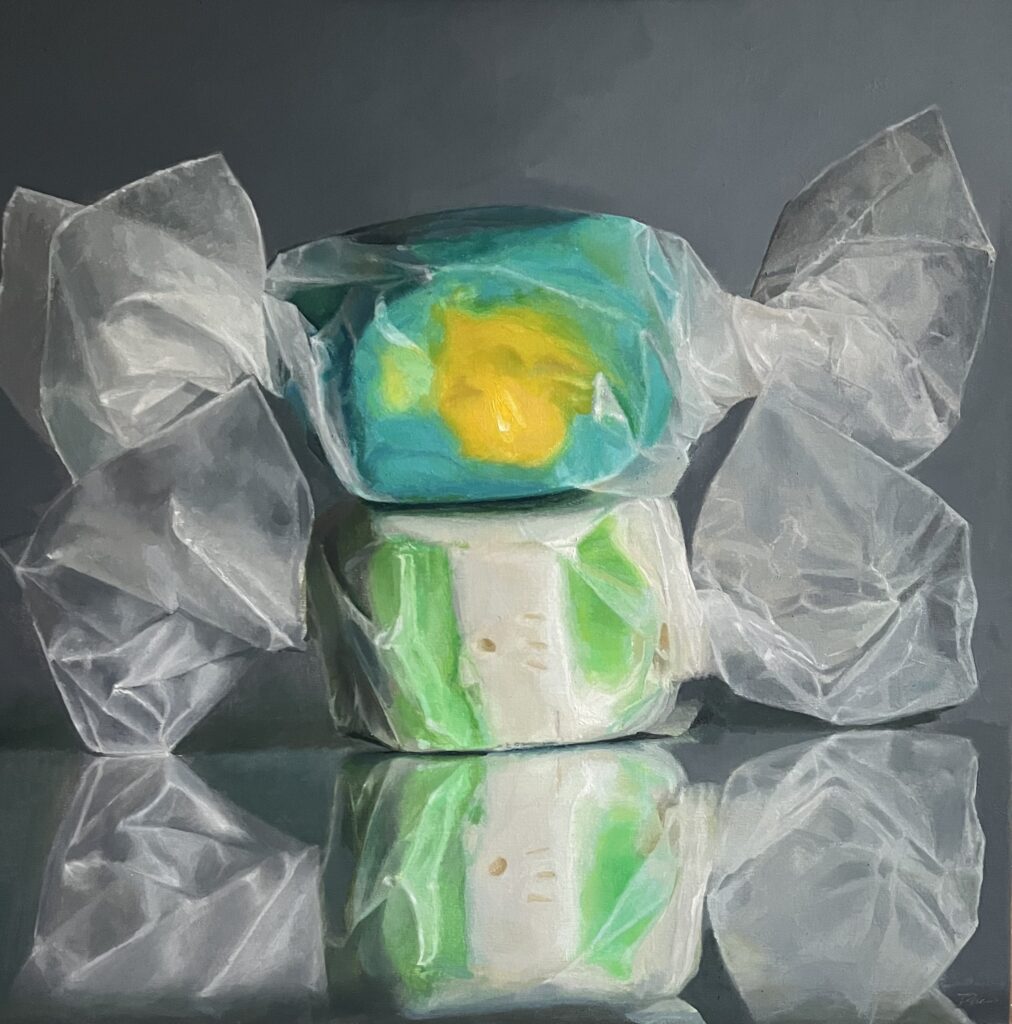Altered states of awareness

Snowmelt, oil on linen, 24″ x 24″
All art constantly aspires to the condition of music. –Walter Pater
This year I received an invitation to show my work at either of two exhibitions in Venice, Italy, and another invitation to exhibit in Spain. There’s no prestige associated with these shows, just an opportunity to get a little visibility, but I’m not going to bite. It’s quite an undertaking to ship work to Europe; I know because of the struggles occasioned by sending a small still life to Prague last year. The theme of the Italian exhibition, though, Consciousness and Visions, prompted this post. I’m mostly a still life artist, so it required some insight for the curator of the show to recognize how I might fit into those shows, but I suspect their invitations cut a wide swath and one could argue that any painting is an example of a vision but no one would need to argue that a great painting aims to arrest and alter the viewer’s immediate awareness of the world.
More than a decade ago, when I was showing work in Chelsea, I met Jane Talcott, a painter in Brooklyn. She immediately understood what I was doing, generally working in two different modes: “The still life work is about the outside world; the candy paintings are about the inner world.” The distinction isn’t hard and fast or exhaustive nor all that intentional, but she was mostly right: all of the paintings attempt to evoke states of mind, meditative experiences of a world otherwise incommunicable. Yet my more traditional still lifes do this, if they do it at all, by offering a glimpse of what one normally sees in the external world, while the candy paintings offer isolated, enlarged, straightforwardly realistic renderings of what’s there, but by isolating the subject and eliminating any surrounding context, and radically changing the scale of what’s seen, the effect becomes far more abstract. The impetus for the candy paintings has more in common with abstraction than traditional representation. I don’t improvise on what I see. I create the image in large part, before I ever pick up a paintbrush, in the physical act of arranging candy in a jar or when I wrap two pieces of taffy and try to find a way to get the visual elements to work together, given the shapes of the waxed paper, in some kind of unity of line, form, shape, color and light. When I look at two chunks of salt water taffy, sitting on the reflection of the lower piece, I think of Rothko. Three areas of color, stacked, uniformly and repetitively configured, but in my case with variations in line and hue and tone, in the sculpting of the wax paper, to express very different moods, or different experiences of a particular place and time, or simply inner states of awareness. Candy is what’s visible, but candy isn’t the subject matter, or rather it isn’t what the painting is “about” any more than a long jam built around a song about Casey Jones is about rail transportation or being cautious after an application of cocaine to one’s work day.
Instrumental music is the best metaphor for what I’m trying to do with candy paintings. It isn’t so much a metaphor as an equation. It’s hard for many people to see painting this way, but with the emergence of abstraction more than a century ago, it’s impossible to miss how painting at least partially makes visible what music makes audible. The fact that each painting is structurally identical in most ways, with variations in color and line and form—inside the structure—offers a way to do what abstractionists have done for decades, to keep reworking a motif and see how a set of severe restrictions on one’s choices can yield a series of images that evoke different kinds of responses and ways of seeing. Numerous artists have explored the expressive possibilities of tightly restricting their choices in formal terms and working variations within these restrictions: Rothko, Noland, Stella, Barnett Newman, Agnes Martin, and many others. Abstraction, for these painters, evokes a musical structure where the major formal elements remain uniform but each painting creates a different response by subtle varations within those formal restrictions. This is how I want the candy paintings to work. So what’s seen, for me, isn’t the literal subject, candy, but an elusive sense of a world summoned by a composition by Erik Satie. I’ve sold ten taffy paintings since last summer, thanks to Arcadia Gallery, Oxford Gallery, Artsy, the LA Art Show, and the Greenwich Art Society. At least one collector bought a taffy painting because the literal subject matter reminded him of taffy from his childhood. I like that, but that isn’t why I paint candy. I suspect others see through and beyond the objects to what the abstract qualities of each image can convey, in its visually musical way.
The annual Five and Under group show begins this week at Arcadia Contemporary. I will have several taffy paintings on view in the exhibition.
Comments are currently closed.